Design and Analysis of a Peak Time Estimation Framework for Vehicle Occurrences at Solar Photovoltaic and Grid-Based Battery-Swappable Charging Stations
Abstract
:1. Introduction
2. Literature Review
Novelty and Contribution
- A comprehensive techno-economic integrated assessment framework of battery-swappable charging stations that is dependent on the dynamic parameters that influence the penetration rate.
- The design of a novel time-based spot congestion analysis tool using a fuzzy-based approach to analyze the impact of multi-dimensional parameters on charging station congestion.
- Mixed integer linear programming-based optimal sizing of hybrid charging stations based on the spot congestion.
- Environmental analysis based on spot congestion and subsequent optimal sizing of a battery-swappable charging station.
3. Materials and Methods
3.1. Methodology
3.2. Congestion Analysis for Fast Charging Stations
3.2.1. Tariff Rates and Preferred Time for Battery Swapping
3.2.2. Tariff Rates and Mileage
3.2.3. Departure Time and State of the Charge of the Vehicle
3.2.4. Arrival Time and State of the Charge of the Vehicle
3.3. Economic Sizing
3.4. Optimal Capital and Operational Cost for Battery-Swappable Charging Stations
3.4.1. Objective Function
3.4.2. Constraints for Zd
3.4.3. Constraints for Zn
3.5. Environmental Analysis
4. Results and Discussion
5. Conclusions
Author Contributions
Funding
Institutional Review Board Statement
Informed Consent Statement
Data Availability Statement
Acknowledgments
Conflicts of Interest
References
- Cui, D.; Wang, Z.; Liu, P.; Wang, S.; Dorrell, D.G.; Li, X.; Zhan, W. Operation optimization approaches of electric vehicle battery swapping and charging station: A literature review. Energy 2022, 263, 126095. [Google Scholar] [CrossRef]
- Coban, H.H.; Lewicki, W.; Sendek-Matysiak, E.; Łosiewicz, Z.; Drożdż, W.; Miśkiewicz, R. Electric Vehicles and Vehicle–Grid Interaction in the Turkish Electricity System. Energies 2022, 15, 8218. [Google Scholar] [CrossRef]
- Saadati, R.; Saebi, J.; Jafari-Nokandi, M. Effect of uncertainties on siting and sizing of charging stations and renewable energy resources: A modified capacitated flow-refueling location model. Sustain. Energy Grids Netw. 2022, 31, 100759. [Google Scholar] [CrossRef]
- Alrubaie, A.J.; Salem, M.; Yahya, K.; Mohamed, M.; Kamarol, M. A comprehensive review of electric vehicle charging stations with solar photovoltaic system considering market, technical requirements, network implications, and future challenges. Sustainability 2023, 15, 8122. [Google Scholar] [CrossRef]
- Zhang, J.; Wang, S.; Zhang, C.; Luo, F.; Dong, Z.Y.; Li, Y. Planning of electric vehicle charging stations and distribution system with highly renewable penetrations. IET Electr. Syst. Transp. 2021, 11, 256–268. [Google Scholar] [CrossRef]
- Sun, B.; Sun, X.; Tsang, D.H.; Whitt, W. Optimal battery purchasing and charging strategy at electric vehicle battery swap stations. Eur. J. Oper. Res. 2019, 279, 524–539. [Google Scholar] [CrossRef]
- Wu, H.; Pang GK, H.; Choy, K.L.; Lam, H.Y. A charging-scheme decision model for electric vehicle battery swapping station using varied population evolutionary algorithms. Appl. Soft Comput. 2017, 61, 905–920. [Google Scholar] [CrossRef]
- Zhang, L.; Zhou, S.; An, J.; Kang, Q. Demand-side management optimization in electric vehicles battery swapping service. IEEE Access 2019, 7, 95225–95232. [Google Scholar] [CrossRef]
- Infante, W.; Ma, J.; Han, X.; Liebman, A. Optimal recourse strategy for battery swapping stations considering electric vehicle uncertainty. IEEE Trans. Intell. Transp. Syst. 2019, 21, 1369–1379. [Google Scholar] [CrossRef]
- You, P.; Pang, J.Z.; Low, S.H. Online station assignment for electric vehicle battery swapping. IEEE Trans. Intell. Transp. Syst. 2020, 23, 3256–3267. [Google Scholar] [CrossRef]
- Wang, H.; Ma, H.; Liu, C.; Wang, W. Optimal scheduling of electric vehicles charging in battery swapping station considering wind-photovoltaic accommodation. Electr. Power Syst. Res. 2021, 199, 107451. [Google Scholar] [CrossRef]
- Yan, J.; Menghwar, M.; Asghar, E.; Panjwani, M.K.; Liu, Y. Real-time energy management for a smart-community microgrid with battery swapping and renewables. Appl. Energy 2019, 238, 180–194. [Google Scholar] [CrossRef]
- Ban, M.; Zhang, Z.; Li, C.; Li, Z.; Liu, Y. Optimal scheduling for electric vehicle battery swapping-charging system based on nanogrids. Int. J. Electr. Power Energy Syst. 2021, 130, 106967. [Google Scholar] [CrossRef]
- Quddus, M.A.; Kabli, M.; Marufuzzaman, M. Modeling electric vehicle charging station expansion with an integration of renewable energy and Vehicle-to-Grid sources. Transp. Res. Part E Logist. Transp. Rev. 2019, 128, 251–279. [Google Scholar] [CrossRef]
- Jordehi, A.R.; Javadi, M.S.; Catalão, J.P. Optimal placement of battery swap stations in microgrids with micro pumped hydro storage systems, photovoltaic, wind and geothermal distributed generators. Int. J. Electr. Power Energy Syst. 2021, 125, 106483. [Google Scholar] [CrossRef]
- Hamidi, A.; Weber, L.; Nasiri, A. EV charging station integrating renewable energy and second-life battery. In Proceedings of the 2013 International Conference on Renewable Energy Research and Applications (ICRERA), Madrid, Spain, 20–23 October 2013; pp. 1217–1221. [Google Scholar]
- Jamian, J.J.; Mustafa, M.W.; Mokhlis, H.; Baharudin, M.A. Simulation study on optimal placement and sizing of Battery Switching Station units using Artificial Bee Colony algorithm. Int. J. Electr. Power Energy Syst. 2014, 55, 592–601. [Google Scholar] [CrossRef]
- Sultana, U.; Khairuddin, A.B.; Sultana, B.; Rasheed, N.; Qazi, S.H.; Malik, N.R. Placement and sizing of multiple distributed generation and battery swapping stations using grasshopper optimizer algorithm. Energy 2018, 165, 408–421. [Google Scholar] [CrossRef]
- Liu, W.; Niu, S.; Xu, H.; Li, X. A New Method to Plan the Capacity and Location of Battery Swapping Station for Electric Vehicle Considering Demand Side Management. Sustainability 2016, 8, 557. [Google Scholar] [CrossRef]
- Celli, G.; Ghiani, E.; Mocci, S.; Pilo, F. A Multiobjective Evolutionary Algorithm for the Sizing and Siting of Distributed Generation. IEEE Trans. Power Syst. 2005, 20, 750–757. [Google Scholar] [CrossRef]
- Ban, M.; Yu, J.; Shahidehpour, M.; Guo, D. Optimal sizing of PV and battery-based energy storage in an off-grid nanogrid supplying batteries to a battery swapping station. J. Mod. Power Syst. Clean Energy 2019, 7, 309–320. [Google Scholar] [CrossRef]
- Ban, M.; Shahidehpour, M.; Yu, J.; Li, Z. A Cyber-Physical Energy Management System for Optimal Sizing and Operation of Networked Nanogrids with Battery Swapping Stations. IEEE Trans. Sustain. Energy 2019, 10, 491–502. [Google Scholar] [CrossRef]
- Zhang, J.; Bai, L.; Jin, T. Joint planning for battery swap and supercharging networks with priority service queues. Int. J. Prod. Econ. 2021, 233, 108009. [Google Scholar] [CrossRef]
- Garcia-Guarin, J.; Infante, W.; Ma, J.; Alvarez, D.; Rivera, S. Optimal scheduling of smart microgrids considering electric vehicle battery swapping stations. Int. J. Electr. Comput. Eng. 2020, 10, 5093. [Google Scholar]
- Khalid, M.; Ahmad, F.; Panigrahi, B.K.; Rahman, H. A capacity efficient power distribution network supported by battery swapping station. Int. J. Energy Res. 2022, 46, 4879–4894. [Google Scholar] [CrossRef]
- Kang, Q.; Wang, J.; Zhou, M.; Ammari, A.C. Centralized charging strategy and scheduling algorithm for electric vehicles under a battery swapping scenario. IEEE Trans. Intell. Transp. Syst. 2015, 17, 659–669. [Google Scholar] [CrossRef]
- Revankar, S.R.; Kalkhambkar, V.N.; Gupta, P.P.; Kumbhar, G.B. Kumbhar. Economic Operation Scheduling of Microgrid Integrated with Battery Swapping Station. Arab. J. Sci. Eng. 2022, 47, 13979–13993. [Google Scholar] [CrossRef]
- Zhang, F.; Yao, S.; Zeng, X.; Yang, P.; Zhao, Z.; Lai, C.S.; Lai, L.L. Operation Strategy for Electric Vehicle Battery Swap Station Cluster Participating in Frequency Regulation Service. Processes 2021, 9, 1513. [Google Scholar] [CrossRef]
- Zhan, W.; Wang, Z.; Zhang, L.; Liu, P.; Cui, D.; Dorrell, D.G. A review of siting, sizing, optimal scheduling, and cost-benefit analysis for battery swapping stations. Energy 2022, 258, 124723. [Google Scholar] [CrossRef]
- Ferrer-Comalat, J.C.; Linares-Mustarós, S.; Rigall-Torrent, R. Incorporating Fuzzy Logic in Harrod’s Economic Growth Model. Mathematics 2021, 9, 2194. [Google Scholar] [CrossRef]
- Chiluwal, S.; Rao, A.M.; Podila, R. Strategies for improving rechargeable lithium-ion batteries: From active materials to CO2 emissions. Nanotechnol. Rev. 2021, 10, 1993–2026. [Google Scholar] [CrossRef]
- Praveenkumar, S.; Agyekum, E.B.; Kumar, A.; Ampah, J.D.; Afrane, S.; Amjad, F.; Velkin, V.I. Techno-Economics and the Identification of Environmental Barriers to the Development of Concentrated Solar Thermal Power Plants in India. Appl. Sci. 2022, 12, 10400. [Google Scholar] [CrossRef]
- Available online: https://www.irena.org/IRENADocuments/Statistical_Profiles/Asia/Pakistan_Asia_RE_SP.pdf (accessed on 1 June 2023).
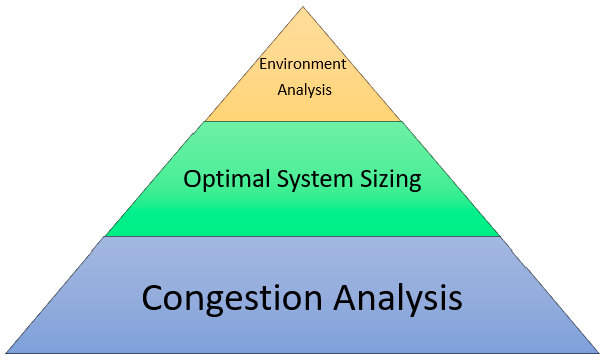
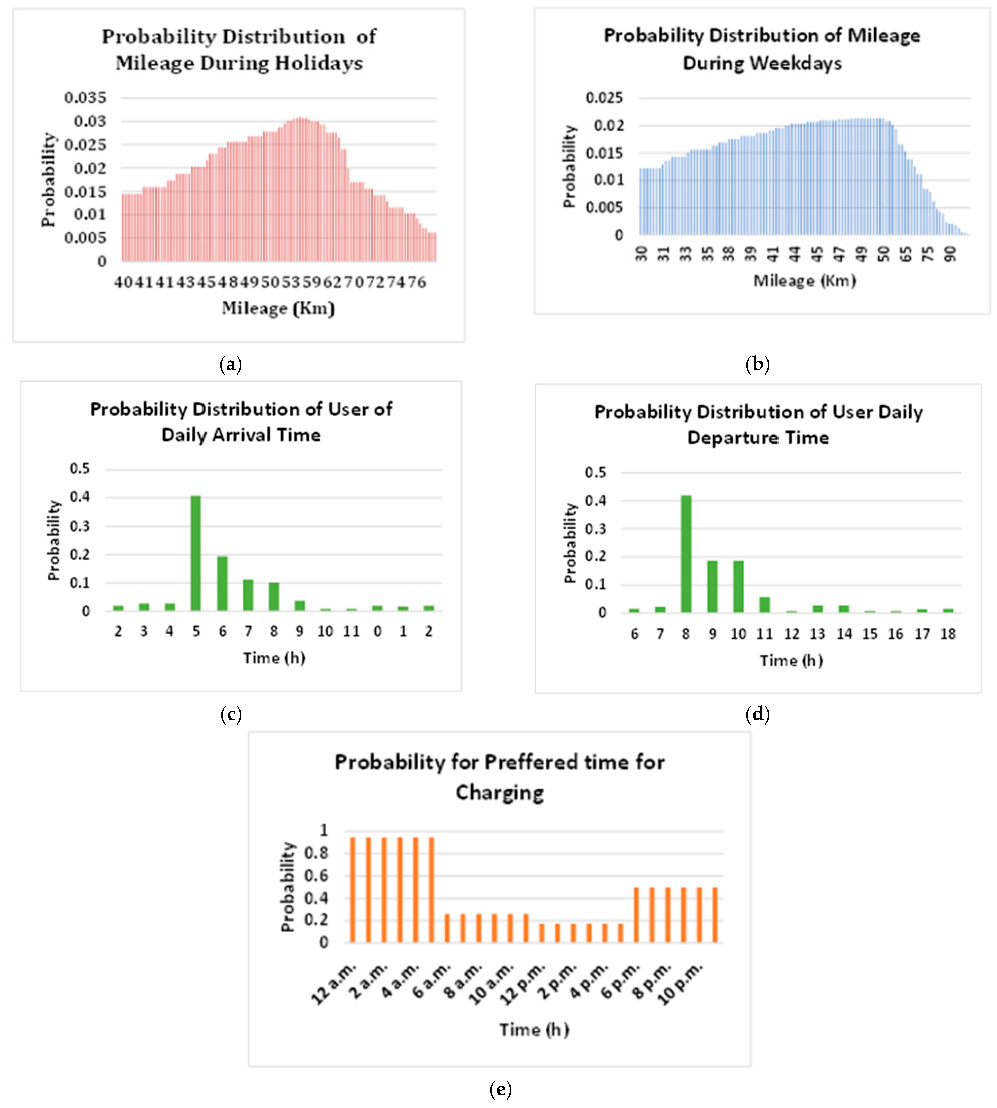
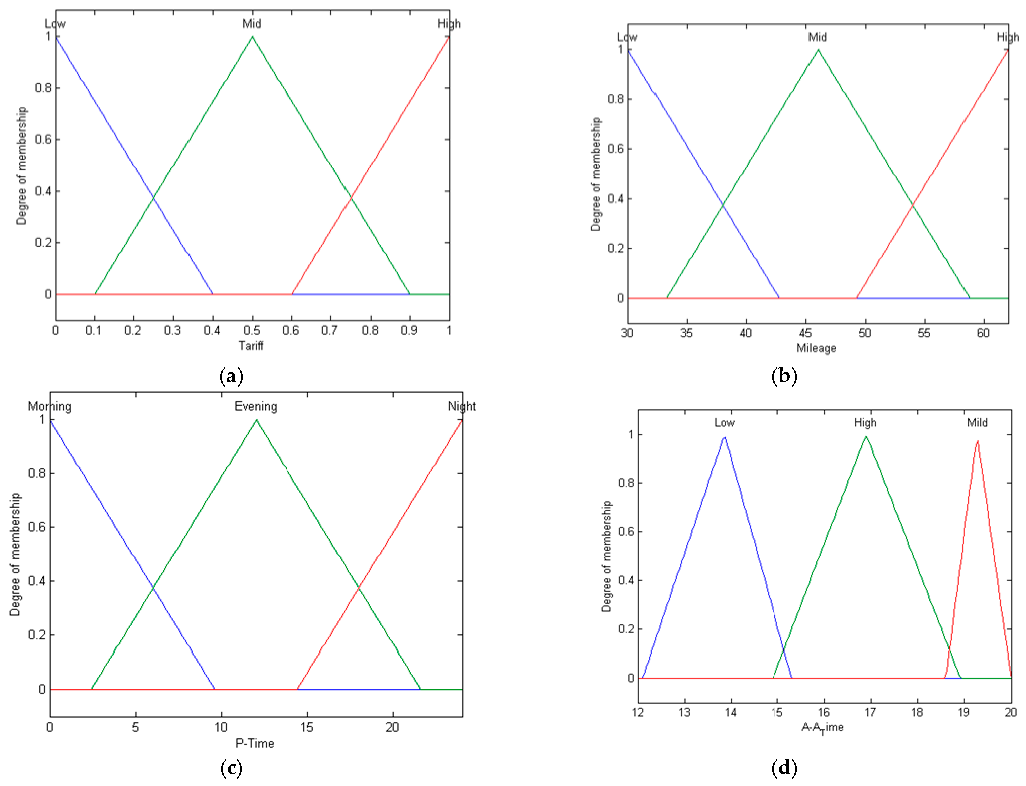

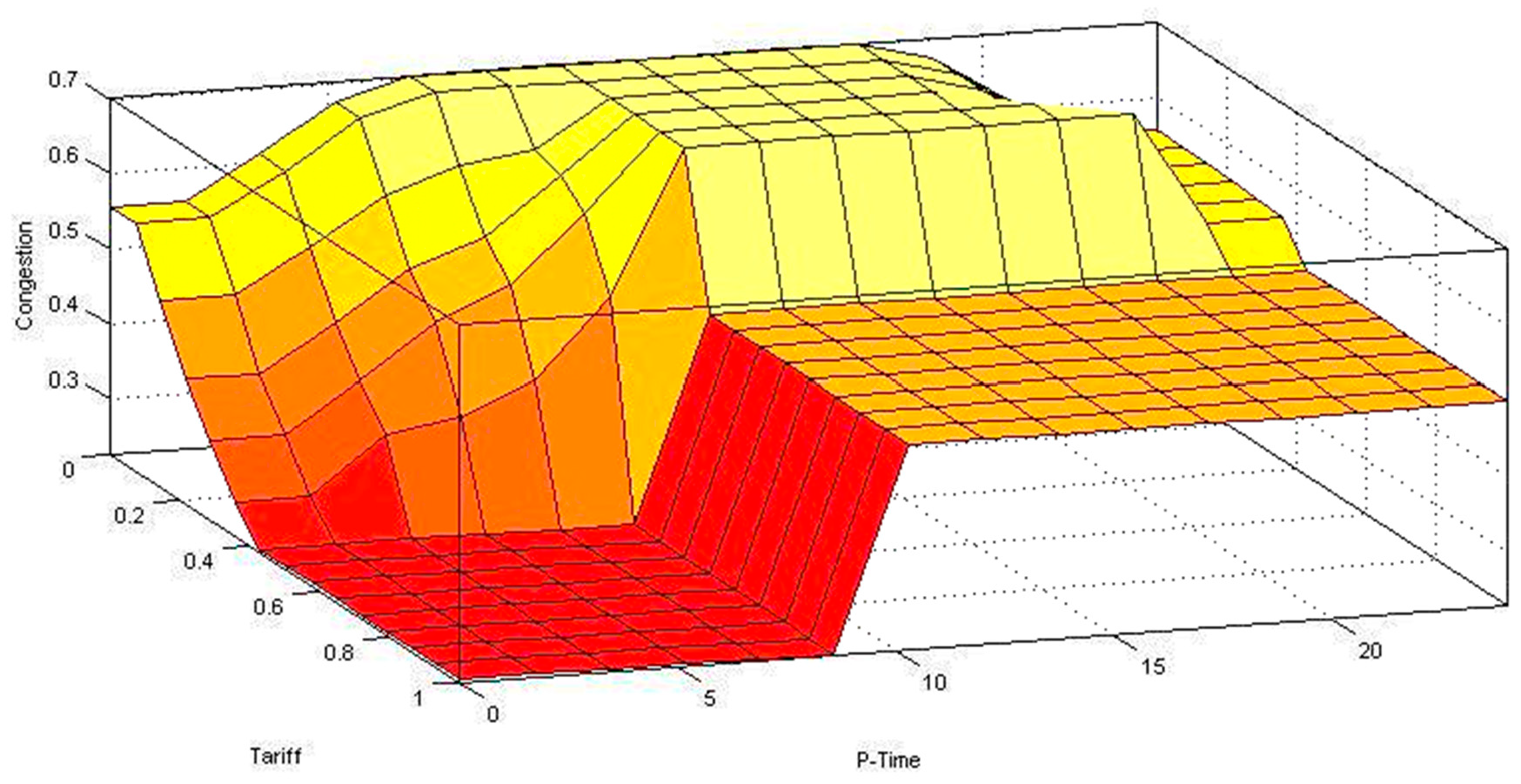



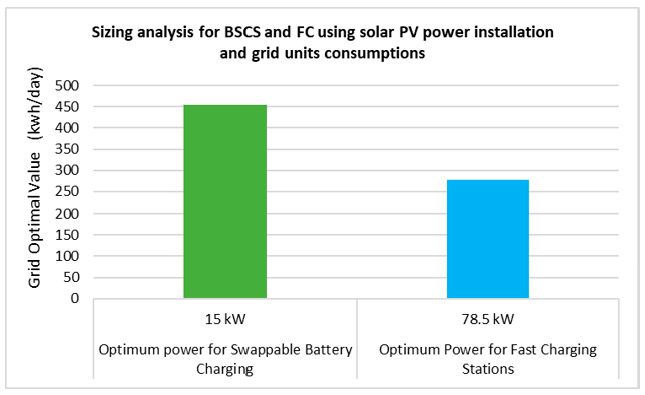
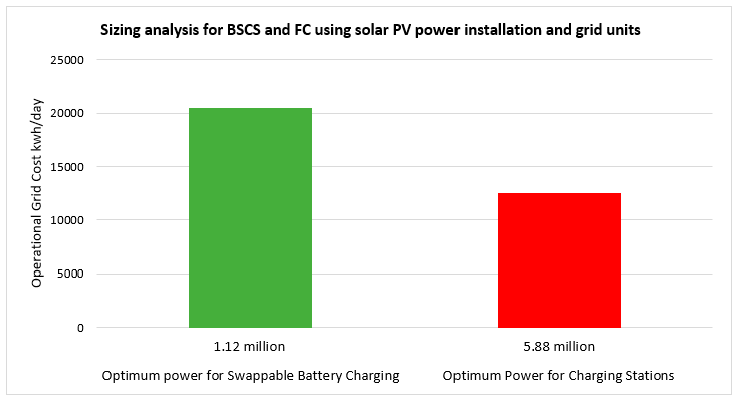
| Emissions Analysis | Optimum Power for Swappable Battery Charging | Optimum Power for Charging Stations |
|---|---|---|
| Charging type | 50 kW | 50 kW |
| Solar PV | 15 kW | 78.5 kW |
| Annual production of solar power GWh | 0.0432 | 0.126 |
| Annual grid production (Gwh) | 0.17 | 0.12 |
| Annual CO2 emissions from grid (kg CO2/Yr) | 2,791,152 | 102,102 |
| Mitigation of CO2 t/GWh | 16.8048 | 49.014 |
| Cost of charging station for solar PV @ 100 Rs/Watt (PKR one million) | 1.5 | 7.8 |
| Annual grid production @ 30 Rs/kWh (PKR one million) | 170 | 120 |
| Factors | Battery-Swappable Charging Stations | Fast Charging Stations | Percentage Difference Fast Charging Station | BSCS | FCS |
|---|---|---|---|---|---|
| Capacity | 50 kW | 50 kW | -- | ||
| Capital cost | 1.12 | 5.88 | 80.95% > BSCS | ✓ | x |
| Operational cost | 7.47 | 4.54 | 39% < BSCS | x | ✓ |
| Annual grid units consumed | 0.17 | 0.12 | 29% < BSCS | x | ✓ |
| Solar PV installation capacity | 15 | 78.5 | 80.89% > BSCS | ✓ | x |
| Carbon mitigation | 16.8048 | 49.014 | 65% > BSCS | x | ✓ |
Disclaimer/Publisher’s Note: The statements, opinions and data contained in all publications are solely those of the individual author(s) and contributor(s) and not of MDPI and/or the editor(s). MDPI and/or the editor(s) disclaim responsibility for any injury to people or property resulting from any ideas, methods, instructions or products referred to in the content. |
© 2023 by the authors. Licensee MDPI, Basel, Switzerland. This article is an open access article distributed under the terms and conditions of the Creative Commons Attribution (CC BY) license (https://creativecommons.org/licenses/by/4.0/).
Share and Cite
Azeem, F.; Irshad, B.; Zidan, H.A.; Narejo, G.B.; Hussain, M.I.; Manzoor, T. Design and Analysis of a Peak Time Estimation Framework for Vehicle Occurrences at Solar Photovoltaic and Grid-Based Battery-Swappable Charging Stations. Sustainability 2023, 15, 16153. https://doi.org/10.3390/su152316153
Azeem F, Irshad B, Zidan HA, Narejo GB, Hussain MI, Manzoor T. Design and Analysis of a Peak Time Estimation Framework for Vehicle Occurrences at Solar Photovoltaic and Grid-Based Battery-Swappable Charging Stations. Sustainability. 2023; 15(23):16153. https://doi.org/10.3390/su152316153
Chicago/Turabian StyleAzeem, Fawad, Bakhtawar Irshad, Hasan A. Zidan, Ghous Bakhsh Narejo, Muhammad Imtiaz Hussain, and Tareq Manzoor. 2023. "Design and Analysis of a Peak Time Estimation Framework for Vehicle Occurrences at Solar Photovoltaic and Grid-Based Battery-Swappable Charging Stations" Sustainability 15, no. 23: 16153. https://doi.org/10.3390/su152316153





